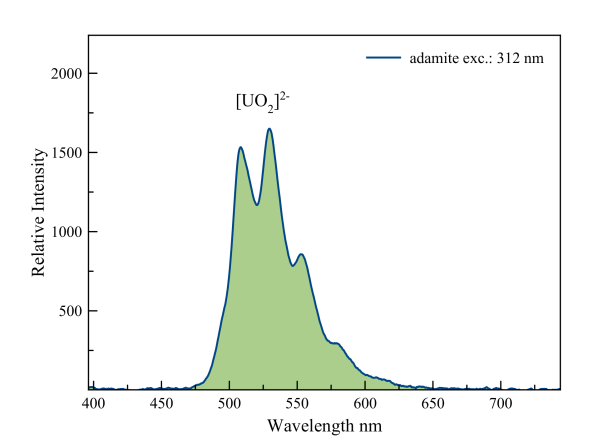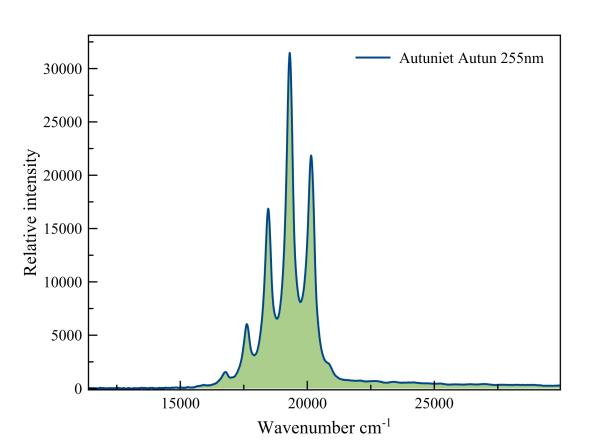Spectra Phosphates - Arsenates - Vanadates

Measured with: Ocean Optics spectrometer USB4000 and a LED light source of 312 nm.
The uranyl ion, [UO2]2-, is very mobile. It contaminates the area around uranium ore deposits because of its good solubility in water. It can replace ions in minerals, but also be absorbed interstitially. The spectrum of uranyl is easily recognizable by the five or six narrow bands that run across it from the blue to orange. Even with a hand-spectroscope one can recognize this spectrum.
Adamite
Autuniet
This fluorescence is intrinsic. Many uranyl minerals fluoresce yellow-green to green. This is a classic spectrum with the uranyl "fingerprint". Autunite is one of the strongest fluorescing minerals.
Measured with: Ocean Optics Flame spectrometer and a LED light source of 255 nm with refection/backscattering probe.
Workgroup Fluorescence
Tyuyamunite
It is difficult to explain this fluorescence. Tyuyalumite is a calcium uranyl vanadate mineral. The vanadate ion has its own fluorescence, quite analogous to other complex molecules such as the tungstate ion or the molybdate ion that we know of scheelite and powellite. The proper fluorescence of the vanadate ion overlaps with that of the uranyl ion, making it hard to see either clearly .
Move mouse arrow over spectrum to see Absolute Spectrale Irradiation.
Download spectrum in wavenumbers
Download spectrum as Absolute Spectral Irradiation (µW/cm²/nm)


